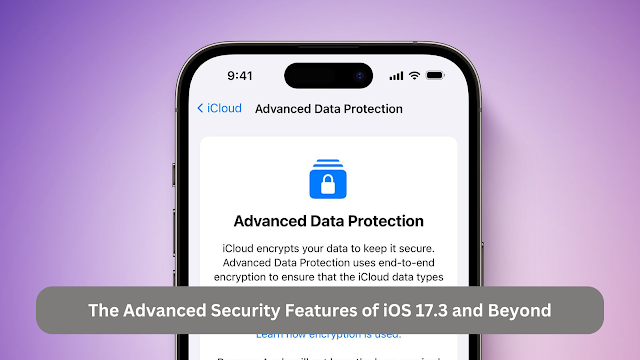The Advanced Security Features of iOS 17.3 and Beyond
In a world where our smartphones hold a plethora of sensitive information, protecting our devices from theft and unauthorized access is paramount. Apple, with its recent release of iOS 17.3, introduced a groundbreaking security update known as Stolen Device Protection. This feature is designed to thwart professional passcode thieves and safeguard your iPhone from unauthorized access. Let’s delve into the details of this security enhancement and explore how it can fortify the defense mechanisms of your beloved iPhone.
Installing and Activating Stolen Device Protection
If you haven't already, it's imperative to install iOS 17.3 to benefit from the Stolen Device Protection feature. Simply go to Settings > General > Software Update and follow the prompts for a seamless installation. Once done, navigate to Settings > Face ID & Passcode and scroll down to find the Stolen Device Protection option. Tap on "Turn On Protection" to activate this robust security measure for your iPhone.
Speaking of safeguarding your data, consider using the Smart Transfer app, a third-party application that facilitates a smooth iPhone to Android transfers and more. This app ensures your data is transferred securely, preserving your privacy and easing the migration process.
How Stolen Device Protection Works
With Stolen Device Protection enabled, your iPhone becomes a fortress against unauthorized actions when you're not in familiar locations. Tasks such as applying for a new Apple Card, erasing content and settings, utilizing Apple Cash and Savings features in Wallet, and setting up a new device will now require Face ID or Touch ID verification. This adds an extra layer of security to prevent malicious activities in case your device falls into the wrong hands.
The One-Hour Delay Mechanism
To further enhance security, Apple has implemented a one-hour delay for sensitive tasks that could compromise your device. Actions like changing your Apple ID password, altering your iPhone passcode, modifying Face ID or Touch ID settings, turning off Find My, and disabling Stolen Device Protection itself will face a one-hour delay. Even after this time elapses, Face ID or Touch ID is still required to verify your identity, giving you a crucial window to realize the theft and take corrective measures.
Looking Ahead: iOS 17.4 and Continuous Protection
Excitingly, the upcoming iOS 17.4 promises an even more robust Stolen Device Protection feature. According to Forbes, a new setting will be introduced, allowing users to have this protection enabled at all times. This means heightened security without compromising convenience. While waiting an hour for certain changes might seem inconvenient, it pales in comparison to the potential fallout of a stolen iPhone with access to sensitive financial apps and personal accounts.
Wrap Up
In the ever-evolving landscape of smartphone security, staying one step ahead is crucial. With iOS 17.3 and the upcoming iOS 17.4, Apple continues to prioritize user safety by fortifying the defenses against potential threats. Take the necessary steps to install and activate these security features on your iPhone. Your digital safety is worth the investment of time and attention. Stay secure, stay protected.



Comments
Post a Comment